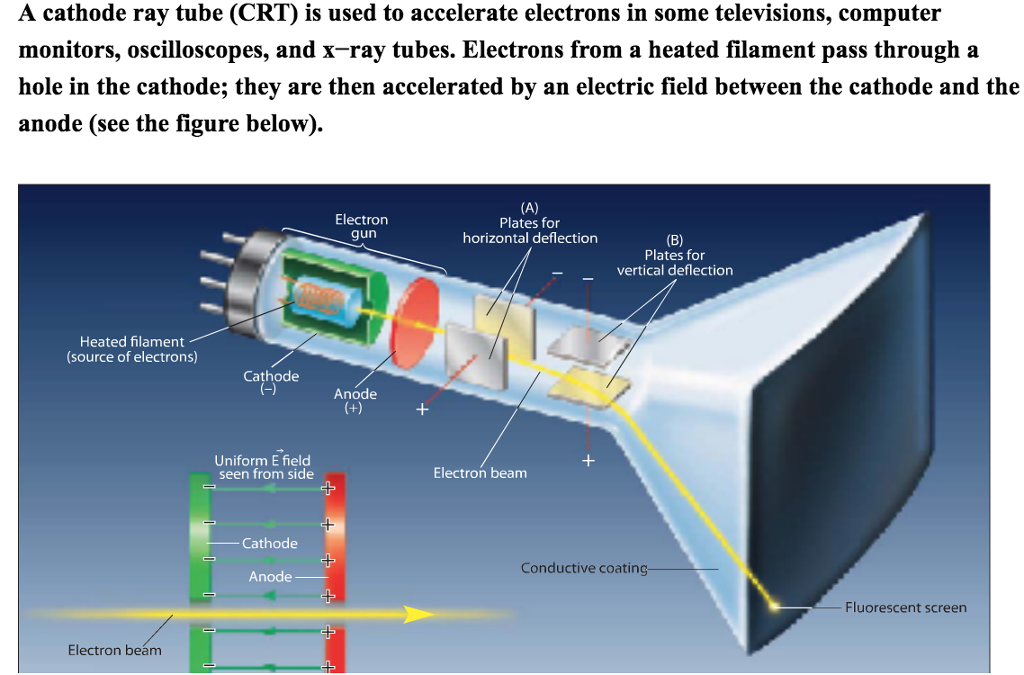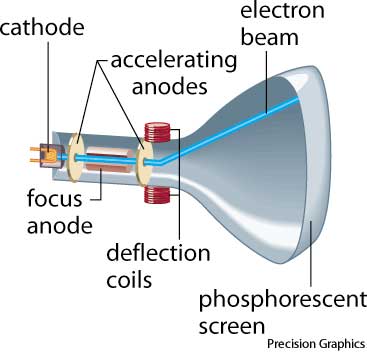
The voltage applied to vertical and horizontal deflection plates is control vertical and horizontal deflection respectively.The deflection system of the CRT consists of two pairs of parallel plates which are vertical and horizontal deflection.Deflection system directs beam which decides the point where the beam strikes the.The focusing system concentrates the electron beam so it converges to a small point when hits the phosphor coating.Similar surveys of computer monitors that were never in Contamination Areas confirmed that radioactivity was incorporated into the monitor. Hot spots were found also along the edges and seals of the cathode ray tube. Cathode Ray Tube Monitors are the base of all video monitors available today. The radioactivity was primarily on the front face of the cathode ray tube and was not amenable to decontamination. Thus control grid controls the Intensity of the spot where the beam strikes the This video explains the working of CRT monitors and its components in malayalam.The negative the control voltage is the fewer the electrons that pass through the

The control grid voltage determines how many electrons are actually in the electron beam. The cathode ray tube (CRT) is a vacuum tube containing one or more electron guns (a source of directed electrons) and a fluorescent screen used to view images.Control grid controls the velocity of electrons before they hit the.The inner side screen is coated with phosphor substance which gives light when it is stroked by.An electron gun at the rear of the tube produce a beam of electrons which is directed towards the screen of the tube by a high voltage typically 15000 to 20000 volts.Heavier, small screens old technology (obsolete) susceptible to burn-insĬRT is used in Televisions and was used in oldĬRT(Cathode Ray Tubes) CRT(Cathode Ray Tubes) Picture slightly less natural and “filmlike” than plasmas slower refresh rate limited viewing angle blacks are brighter susceptible to burn-out and image persistence dead or stuck pixels may appear Panels weigh less than plasma use less energy light thinner emits less electromagnetic radiation no bleeding or smearingĮasy to move as cannot be wall-mounted good picture quality cheaper wide viewing quality sharper image quality multiple resolutions

Glass plates, nematic liquid crystal, internal light source.ĬRT is weighted, bulky, and large in size. Vacuum glass tube, phosphor screen, electron gun, deflection plates. The main component of CRT is the vacuum tube while in LCD is the main component is liquid crystal. These monitors produce sharp, flicker-free images. While A LCD is a desktop/pc monitor that uses a liquid crystal display to produce images. A cathode-ray tube (CRT) is a large, sealed glass tube. Summary: Difference Between CRT and LCD is that CRT is a desktop/pc monitor that contains a cathode-ray tube.


 0 kommentar(er)
0 kommentar(er)
